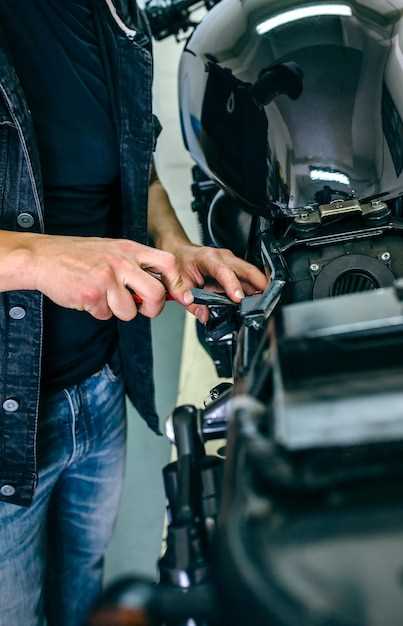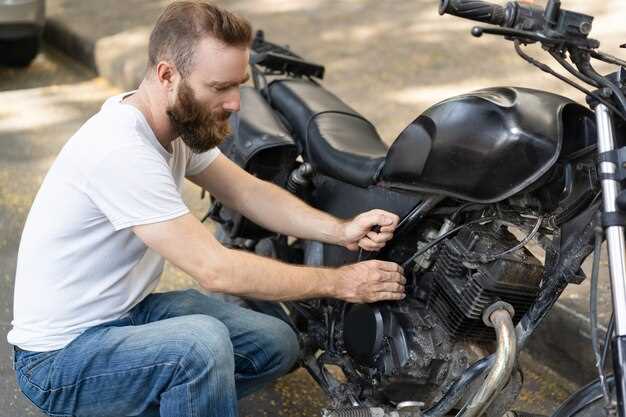
When it comes to maintaining your BMW, ensuring the proper function of the clutch system is crucial for a smooth driving experience. The clutch master cylinder plays a vital role in this system, facilitating the hydraulic pressure required to engage and disengage the clutch. Over time, wear and tear can lead to a malfunction, making it essential for car enthusiasts to know how to replace this component effectively.
If you are a DIY enthusiast, replacing the clutch master cylinder can be a straightforward task with the right tools and guidance. This guide will provide you with step-by-step instructions to tackle the replacement process safely and efficiently. With some patience and attention to detail, you can restore your BMW’s clutch performance without the need for professional assistance.
Throughout this article, you will find practical tips, useful diagrams, and a clear list of necessary tools. Whether you are an experienced mechanic or a novice looking to expand your skill set, our guide will empower you to handle the replacement of the BMW clutch master cylinder with confidence.
Identify Symptoms of a Failing Clutch Master Cylinder

A failing clutch master cylinder can cause significant issues in your vehicle’s performance. Identifying the symptoms early can save you time and money with a timely diy repair. Look out for the following signs:
First, check for fluid leakage. A common indication of a failing master cylinder is a spot of hydraulic fluid on the ground near the pedal area. Inspect the area around the master cylinder and the hydraulic lines for any signs of seepage.
Another symptom is a spongy or soft clutch pedal. If the pedal feels unusually soft or sinks to the floor without much resistance, it may indicate that the master cylinder is not building the necessary pressure. This can lead to difficulty in engaging or disengaging the gears.
Additionally, you may experience inconsistent clutch engagement. If the clutch engages at a different point when pressing the pedal or if it occasionally does not engage at all, this can suggest problems with the master cylinder.
Listen for unusual noises as well. A hissing or whining sound when you press the clutch pedal can be a sign of air trapped in the system, which may stem from a failing master cylinder.
Lastly, note any warning lights. In some models, a malfunctioning clutch system can trigger warning lights on your dashboard. Always consult your vehicle’s manual for specific indications related to the clutch system.
By recognizing these symptoms early, you can effectively address the issues related to your clutch master cylinder before they escalate, making your diy repair journey smoother.
Step-by-Step Procedure for Removing and Installing the Clutch Master Cylinder

To successfully replace the clutch master cylinder in your BMW, follow these detailed steps to ensure a smooth and effective DIY process.
Tools and Materials Needed:
- New clutch master cylinder
- Wrenches and sockets
- Screwdrivers
- Brake fluid
- Container for old fluid
- Rags or shop towels
Step 1: Prepare the Vehicle
Begin by parking your BMW on a level surface and engaging the parking brake. Disconnect the negative terminal of the battery to ensure safety while working on the electrical system.
Step 2: Remove the Clutch Master Cylinder
Locate the clutch master cylinder, typically found on the driver’s side of the engine bay. Remove any covering or brackets that may obstruct access. Use a wrench to disconnect the hydraulic line, carefully allowing any fluid to drain into your container. Next, remove the mounting bolts securing the master cylinder to the firewall, and gently pull it out.
Step 3: Install the New Clutch Master Cylinder
Take the new clutch master cylinder and position it where the old one was removed. Secure it to the firewall using the mounting bolts. Ensure that it is tightly fastened to avoid any leakage once installed.
Step 4: Reconnect the Hydraulic Line
Reconnect the hydraulic line to the new master cylinder. Make sure the connection is secure and free of any debris that could cause a blockage.
Step 5: Bleed the Clutch System
With the master cylinder installed, it’s crucial to bleed the clutch system to remove any air that may have entered. Locate the bleed valve on the slave cylinder and use a wrench to open it slightly. Have an assistant pump the clutch pedal several times, then hold it down while you close the bleed valve. Repeat this process until the fluid runs clear and free of bubbles.
Step 6: Reconnect the Battery and Test
After ensuring that all connections are secure, reconnect the negative battery terminal. Start the engine and test the clutch pedal for proper engagement and disengagement. Check for any leaks around the master cylinder and hydraulic line.
This step-by-step procedure will help you effectively remove and install the clutch master cylinder in your BMW, ensuring a successful DIY project.
Testing the New Clutch Master Cylinder for Proper Functionality
Once you have successfully installed the new clutch master cylinder in your BMW, it is crucial to test its functionality to ensure optimal performance. Start by checking the fluid level in the reservoir to confirm it is filled to the required level. Using the correct hydraulic fluid is essential for proper operation.
Next, depress the clutch pedal slowly. You should feel consistent resistance throughout the pedal’s travel. If the pedal feels spongy or sinks to the floor, it indicates a potential issue with air trapped in the system or a malfunctioning cylinder.
To further evaluate the clutch master cylinder, perform a series of clutch engagement tests. With the engine on and in neutral, press the clutch pedal fully and shift into first gear. If the car does not move smoothly into gear, this may be a sign of insufficient hydraulic pressure, suggesting a problem with the master cylinder.
Additionally, monitor for any fluid leaks around the master cylinder and the associated lines. Leaks can compromise the system’s efficiency and require immediate attention. Inspect connections to ensure they are tight and secure.
Finally, conduct a road test to assess the clutch’s overall functionality under driving conditions. Pay attention to any unusual noises, vibrations, or difficulties in gear shifting. If everything operates smoothly, your new clutch master cylinder is functioning correctly.



